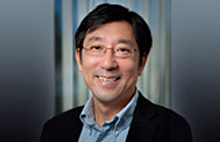IHEP in the Media
Chi-Chang Kao named SLAC director
2012-11-14
Chi-Chang Kao, an associate laboratory director at SLAC National Accelerator Laboratory, has been named as the
lab's fifth director, Stanford University President John Hennessy announced today.
 |
| Chi-Chang Kao, Noted X-ray Scientist, Named SLAC Director |
Kao will succeed Persis S. Drell, who announced her intention to step down from the position late last year. He will formally assume his position as director on Nov. 1, 2012.
Kao came to SLAC in 2010 from Brookhaven National Laboratory in New York, where he served as chairperson of the National Synchrotron Light Source (NSLS). In his five years as chairperson of NSLS, Kao undertook major upgrades to the light source's scientific programs and experimental facilities, while also developing potential science programs for NSLS-II, a new light source currently under construction at Brookhaven. His research focuses on X-ray physics, superconductivity, magnetic materials and the properties of materials under high pressure.
Kao earned a bachelor's degree in chemical engineering in 1980 from National Taiwan University and a doctorate in chemical engineering from Cornell University in 1988. He joined Brookhaven shortly after, working his way from NSLS postdoctoral research assistant to chair. Kao also served as an adjunct professor in the Department of Physics and Astronomy at Stony Brook University. He was elected a fellow of the American Physical Society in 2006 and was named a fellow of the American Association for the Advancement of Science in 2010 for his many contributions to resonant elastic and inelastic X-ray scattering techniques and their application to materials physics, as well as for his leadership at the NSLS.
SLAC is one of 10 national laboratories in the DOE Office of Science. Scientists at SLAC aim to reveal the universe at its smallest, largest, fastest and most extreme by studying the leading questions in X-ray science, astrophysics, particle physics and accelerator research.
Since opening in 1962, SLAC has built the longest linear accelerator in the world, discovered several basic building blocks of matter and created the first website in North America. Six scientists have been awarded Nobel Prizes for work done at SLAC and more than 1,000 scientific papers are published each year based on research at the lab.
In addition to its own staff, SLAC's cutting-edge research facilities attract thousands of scientists from across the world each year. Among these facilities is LCLS, a tool capable of discerning details of the atomic world in ways never before possible.
In addition to its own staff, SLAC's cutting-edge research facilities attract thousands of scientists from across the world each year. Among these facilities is LCLS, a tool capable of discerning details of the atomic world in ways never before possible.
Work done at SLAC aims to discover new drugs for healing, new materials for electronics, new ways to produce energy and new methods for cleaning up the environment. Some SLAC scientists explore the fundamental physical processes of the cosmos, from the origin of the universe to the nature of dark matter and dark energy, while others develop smaller, more efficient versions of particle accelerators widely used in research, medicine and industry.
Source: SLAC Website